Deep Diving Mammals Tricks Revealed - How They Hold Breath for Hours
Diving mammals and birds cannot breathe underwater, unlike frogs that can breathe through their skin. The lungs can hold a limited amount of air. If the lungs were huge the animals would be too buoyant to dive. The brain and heart cannot survive without oxygen for more than 2-3 minutes. So how can diving mammals and birds manage to dive for so long?
We know that all mammals and birds have a diving reflex.
Many mammals dramatically reduce their heart rates when diving. Another trick they use is to cut off oxygen supply to most of the tissues in the body such as the muscles. These tissues can work anaerobically, that is without using oxygen, and accumulate what is called an ‘oxygen debt’.
Sprinters running over 100m or 200m use the equivalent of 2-5 times the amount of oxygen they actually breathe during the run. Many runners effectively hold their breaths during short sprints of intense work.
Most metabolism in the bodies of diving mammals is done anaerobically. This saves the stored oxygen in their lungs and haemoglobin for the nerves and brain that absolutely must have oxygen to survive.
Diving mammals use this mechanism. However, new research has highlighted the importance of another trick: ‘Storing Oxygen in the muscles’. Myoglobin, which is closely related to haemoglobin in the blood, can store oxygen. Diving mammals and birds have extra large amounts of myoglobin in their muscles and this is a very effective trick in their quiver of tricks that allow them to dive for so long.
Recent research has shed more light on the role that myoglobin plays in deep and long dives by mammals. This article provides an update on these new insights.
Humans are Puny Divers compared with seals, whales, penguins and platypus

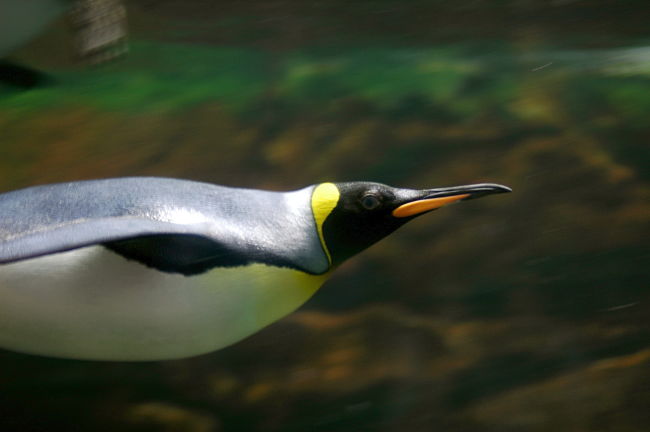
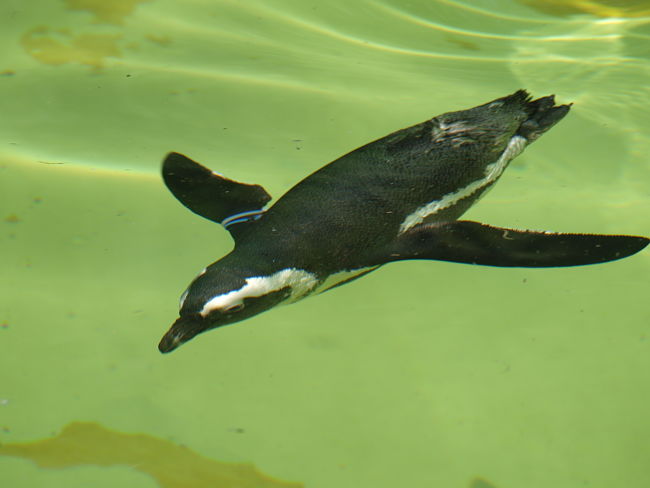
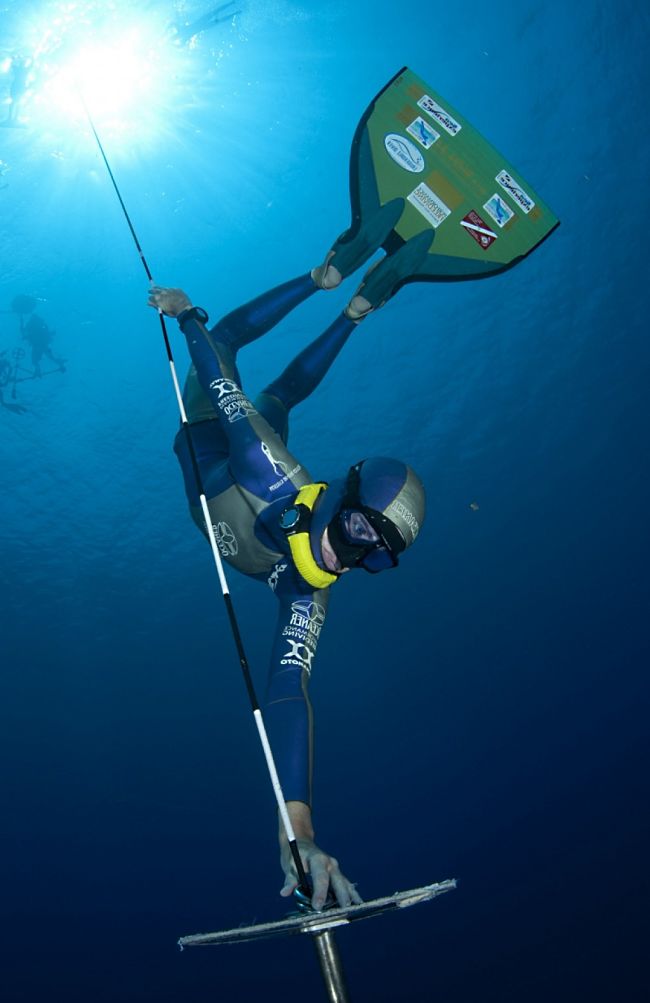
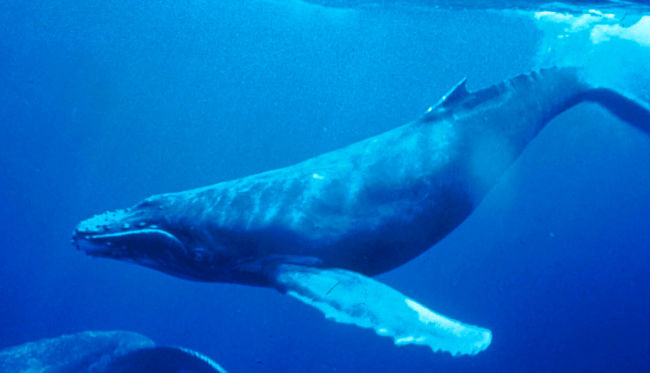
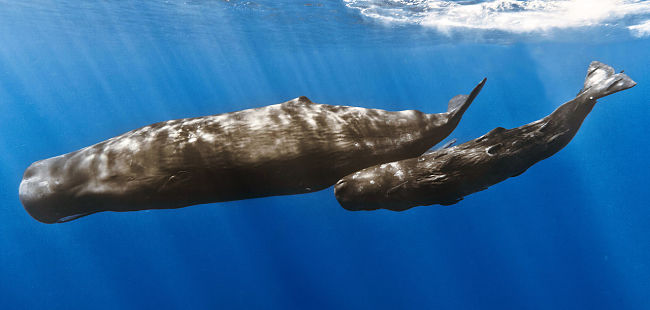
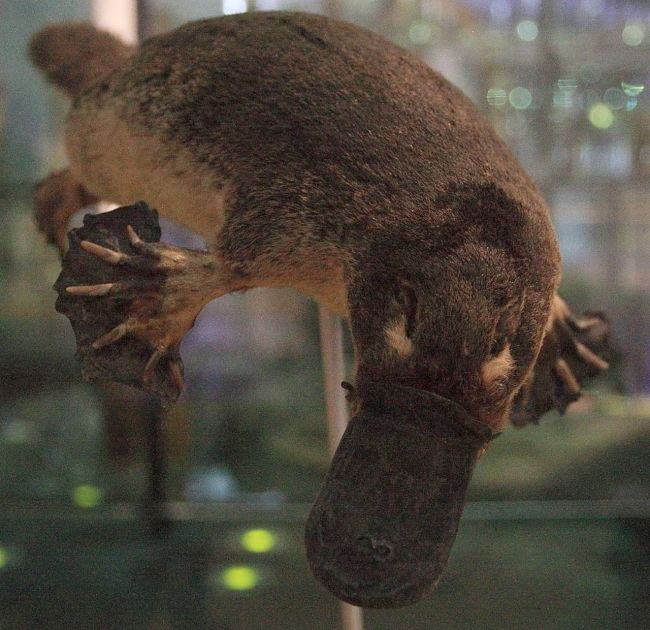
Best Divers in the Animal Kingdom
The table below shows that humans would get the 'wooden spoon' in the animal olympics for diving duration and breath holding. Most people can only hold their breath for about 1-3 minutes. The world record for a human is over 20 minutes, but this is fat less than for Elephant seals, Bottlenose Whales and Sperm whales that can dive for more than two hours. The, Blue Whale, Bowhead Whale and Right Whale can dive for about one hour.
Average and Maximum Dive Duration for Best Mammals and Birds
|
Animal
|
Average Dive Time (Minutes)
|
Maximum Dive Time (minutes)
|
|---|---|---|
|
Human
|
1
|
22
|
|
Polar bear
|
1.5
|
17
|
|
Sea otter
|
5
|
|
|
Platypus
|
10
|
|
|
Muskrat
|
12
|
|
|
Hippopotamus
|
15
|
|
|
Sea cow
|
16
|
|
|
Beaver
|
20
|
|
|
Porpoise
|
15
|
|
|
Bottlenose Dolphin
|
8
|
10
|
|
Seal
|
25
|
|
|
Greenland whale
|
60
|
|
|
Sperm whale
|
90
|
137
|
|
Bottlenose whale
|
60
|
120
|
|
Elephant seals
|
35
|
120
|
|
Cuvier's beaked whales
|
85
|
|
|
Blainville's dove
|
57
|
|
|
Emperor Penguins
|
6
|
12
|
What is Myoglobin and What is It's Role in Diving?
Myoglobin is an oxygen binding pigment, resembling haemoglobin that stores oxygen in the muscles and help keep the muscles supplied with oxygen for respiration. As shown in the table below, the concentration of myoglobin in the muscles of diving vertebrates is about 10–30 times higher than in humans and other land based mammals. Diving mammals also have a much higher capacity to store oxygen in their bodies, with a high proportion of the extra capacity being due to the higher amount of myoglobin.
Diving mammals also have more haemoglobin both by having more blood and a higher density of red blood cells in their blood. For diving mammals 10-20% of their total body mass is blood, compared with about 7% in humans.
So clearly, one trick that diving mammals have up their sleeves, is their much greater capacity to store oxygen in their bodies.
Comparison of the Oxygen Storing Capacity in Blood and Whole Body of Diving and No-Diving Mammals
|
Species
|
Haemoglobin (gm / 100 ml of blood)
|
Blood volume (ml per kg of body weight)
|
Total Oxygen Capacity (ml per kg of body weight)
|
|---|---|---|---|
|
Human
|
16
|
80
|
16
|
|
Dog
|
14.8
|
86
|
18.7
|
|
Horse
|
11.1
|
62
|
13.3
|
|
Harbour Seal
|
20
|
159
|
42
|
|
Elephant Seal
|
20.7
|
207
|
56.9
|
Differences in Where Oxygen is Stored in Mammals
The two images below clearly shows that most of the extra oxygen stored in the bodies of diving mammals is in the myoglobin.
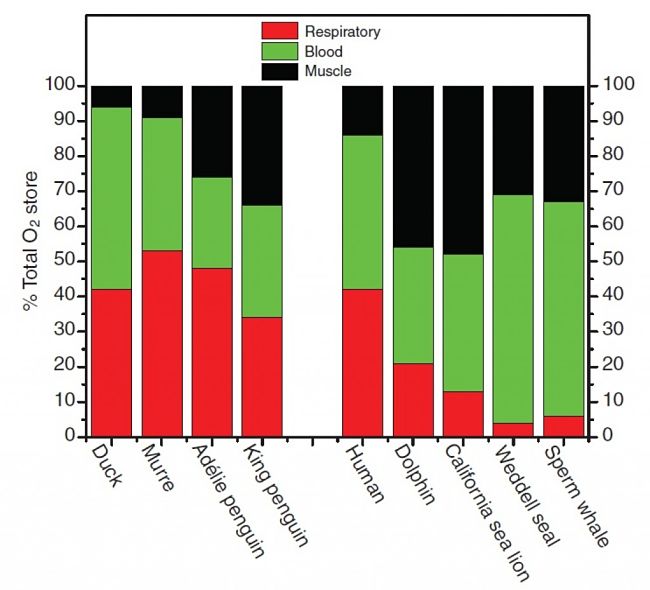
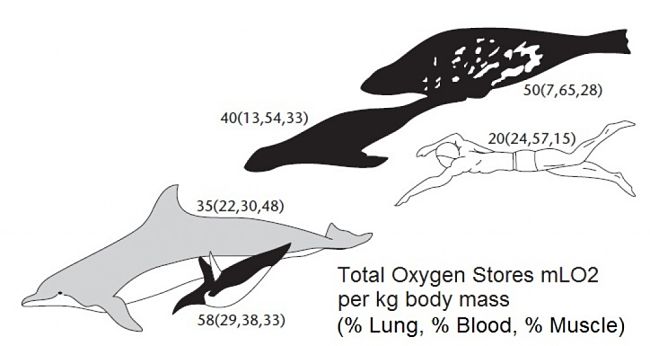
Myoglobin Level in Muscles of Diving and Non-Diving Mammals
|
Species
|
Content (mg per gram wet mass)
|
|---|---|
|
Mouse
|
0.2
|
|
Human
|
0.2
|
|
New Zealand white rabbit
|
0.8
|
|
Horse
|
0.9
|
|
Beaver
|
1.2
|
|
Bottlenose dolphin
|
2.6
|
|
Porpoise
|
4.1
|
|
Elephant Seal
|
5.1
|
|
Weddell Seal
|
5.4
|
|
Sperm Whale
|
5.7
|
|
Northern elephant seal
|
6.4
|
|
Ribbon Seal
|
8.1
|
The Oxygen Debt Trick Used by Diving Mammals
When mammals dive the circulation is shut down via the diving reflex. The muscles initially rely on oxygen stored in the myoglobin and in the blood reserves in the muscles. The oxygen in the blood stream is reserved for supplying the brain. When the oxygen in the muscles is exhausted the muscle metabolism switch to an anaerobic mode that produces a substance called lactic acid as a by product. This build up in the muscles as an oxygen debt. The use of oxygen to break down this lactate is postponed until after the dive is completed. As shown in the image below, when the dive is over the circulation to the muscles is restored. The lactate in the muscles is flushed into the blood stream. It is processed by the liver and organs via a process that requires oxygen. After the dive the mammal needs to consume extra oxygen to repay the debt incurred by shunting the metabolism into lactate.
